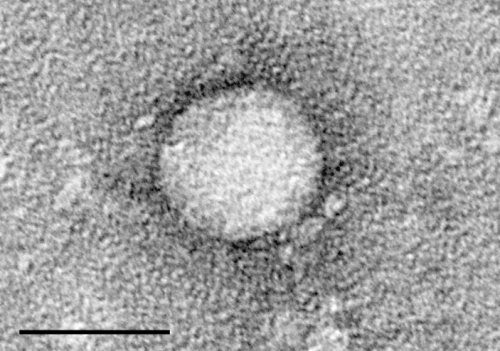High rate of cancer recurrence found in certain hepatitis C patients

Data from a new study show that patients with Hepatitis C virus (HCV) taking direct-acting antiviral treatments (DAAs), who have previously fought off hepatocellular carcinoma (HCC), the most common form of liver cancer,1 had a 'high rate' of re-developing their illness.
The large retrospective cohort study, presented today at The International Liver CongressTM in Barcelona, Spain found 29% of patients who had a history of HCC re-developed the condition during or after taking DAAs.
According to the World Health Organization, liver cancer accounts for 662,000 deaths and is the third leading cause of cancer-related death, exceeded only by cancer of the lung and stomach.2 Approximately 75% to 80% of cases of HCC occur in Asia, however, there is considerable variation within continents.2 The overwhelming majority of HCC cases occur in patients with chronic liver disease, where approximately 80% to 90% have cirrhosis (scarring of liver tissue), and most of the remainder have moderate to advanced fibrosis (an accumulation of scar tissue in the liver).2
"Even in a relatively short observation period, we have shown that high recurrence rates of hepatocellular carcinoma can occur in Hepatitis C patients taking direct-acting antivirals," said Dr Federica Buonfiglioli, DIMEC, University of Bologna, Italy and study author. "Even though further investigation is needed, we believe our findings justify close monitoring for all cirrhotic patients on such treatments."
In the Italian study, medical records of 344 HIV-negative patients with HCV related cirrhosis, who did not have active HCC, were analysed. All patients had received treatment with one of the following DAA combinations: sofosbuvir and simeprevir (34%), 3D combination* (22%), sofosbuvir and ribavirin (17%), sofosbuvir and daclatasvir (16%) and sofosbuvir and ledipasvir (10%). Occurrences of HCC were assessed by comparing baseline enhanced-ultrasonography and MRI/CT-scans with those taken during the six month post treatment follow-up.
Sustained virologic response was achieved in 89% of patients at 12 weeks post treatment. At 24 weeks post treatment, active HCC was detected in 7.6% of all patients (n=26) without a history of HCC - deemed to be a 'standard rate' by the study authors. However, in the 59 patients who had a previous history of HCC, a 'high rate' of 29% (n=17) redeveloped the condition.
"These initial findings provide important insight to how Hepatitis C management strategies could be developed to detect HCC early in patients who are most at risk," said Professor Laurent Castera, EASL Secretary General. "These findings deserve further investigation given their clinical significance."
More information: * 3D combination consists of ABT-450 with ritonavir (ABT-450/r), the NS5A inhibitor ombitasvir, and the nonnucleoside polymerase inhibitor dasabuvir and ribavirin
References:
1 MedlinePlus. Liver cancer - hepatocellular carcinoma. Available from: www.nlm.nih.gov/medlineplus/en … y/article/000280.htm. Last accessed: March 2016.
2 US National Library of Medicine National Institutes of Health. Hepatocellular carcinoma: management of an increasingly common problem. Available from: www.ncbi.nlm.nih.gov/pmc/articles/PMC2446418/. Last accessed: March 2016.


















